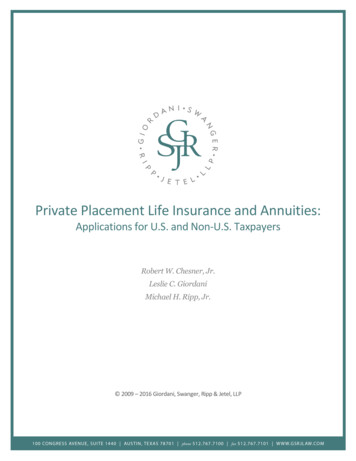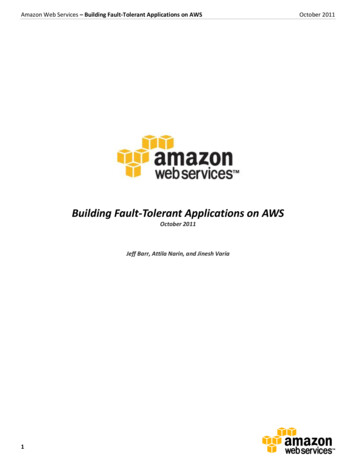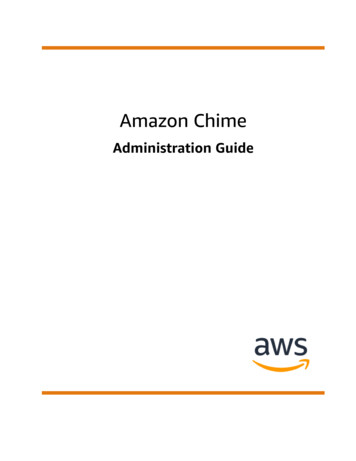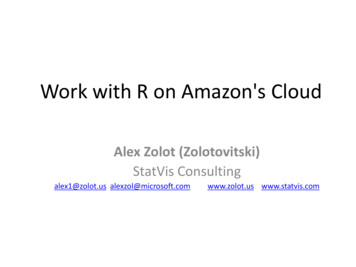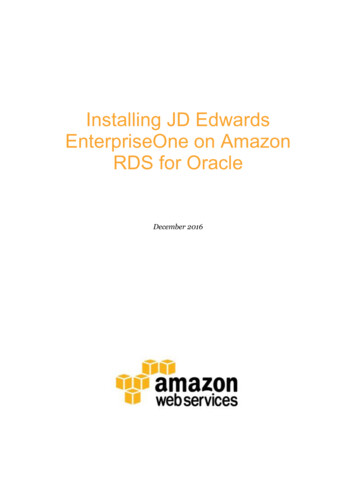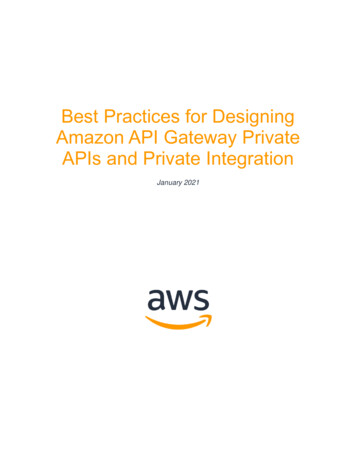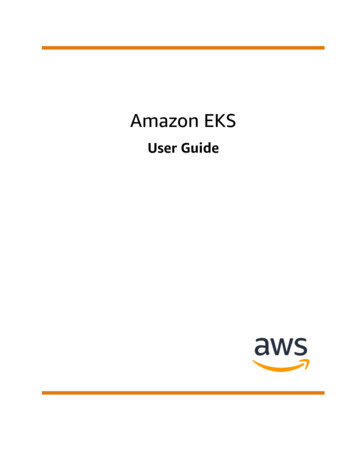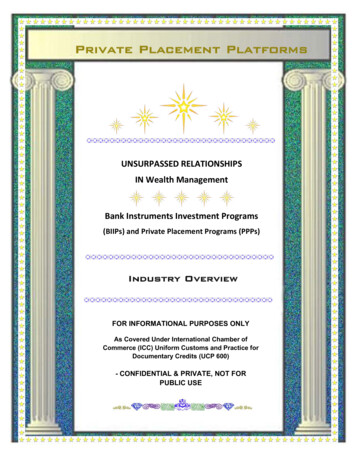
Transcription
Private Placement PlatformsUNSURPASSED RELATIONSHIPSIN Wealth ManagementBank Instruments Investment Programs(BIIPs) and Private Placement Programs (PPPs)Industry OverviewFOR INFORMATIONAL PURPOSES ONLYAs Covered Under International Chamber ofCommerce (ICC) Uniform Customs and Practice forDocumentary Credits (UCP 600)- CONFIDENTIAL & PRIVATE, NOT FORPUBLIC USE1Rev 12/13/21
Contents jumps toContents. 2Private Placement Platforms. Error! Bookmark not defined.Overview . 7Background . 8Nature of the Investment. 9Monetization of Assets . 10How to Convert Assets for Sale into Platform Trade Deals . 11How it Works . 11Risks and Risk Management . 14Investor Funds . 14Why the BIIP Industry Denies Its Own Existence . 15Dispelling Myths about Bank Instruments . 18Don’t Be Deceived by Broker Jokers . 20Why do banks issue MTNs? . 21Costs . 21How to Protect Yourself in PPP Programs. 22Questions and Answers . 25Typical Private Placement Programs . 352Rev 12/13/21
“As my journey continued, I found my mission was evolving. At each stopalong the way, I was discovering tools, opportunities, and investmentproducts available to ultrawealthy people that the average person neverhears about. And ironically, some of the best ones have very little risk, orthey have limited risk with what they call asymmetric risk / reward - - whichmeans the investors get a big upside potential for very little downsideexposure. And that’s what the ‘smart money’ lives for.”- - Tony Robbins, pages 25-25, “Money – Master the Game” (#1 New York TimesBestseller)A SEMINAL FOUNTAIN OF GOOD FOR THE WORLD ECONOMYIn 1933, when the banking cabal had achieved their dream - - and the USgovernment declared bankruptcy - - the bankers foreclosed on theWashington DC apparatus and took it over more completely than ever before.House Joint Resolution (HJR) 192 made the labor, the property, and eventhe bodies of every American the collateral for the so-called “US dollar”. Butthat has two sides to it:Slave: If people think, as most people do, that their bodies, their labor, andtheir property back the money system, then they think they are responsiblefor the federal debts and taxes, etc. They believe they are the subjects ofthe state.Sovereign: But if people realize that - - wait a minute, we are the creditors- - we are the backing for the money! That makes us the sovereigns in thiscountry. We are the creditors, and the bankers are the debtors.Exactly like that, there are two ways one can think about Bank InstrumentsInvestment Programs:Slave:If people think, as most people do, that the Private PlacementPlatforms trade in debt instruments, and therefore this is “totally evil” - they’re thinking in black-and-white duality. They’re devolving into “us against3Rev 12/13/21
them”. They’re failing to comprehend the intrinsic neutrality of the system,and the potential to use its mechanisms for good. They are falling below thesystem, by feeling helpless and powerless to put it to good use.Sovereign: But if people realize that:v The BIIP industry is the only trading market that has no losers on theother side of every trade;v It is the largest market on Earth - orders of magnitude larger than Forex;v Humanitarian projects that are truly helping the world are being fundedby many participants in it;v It is the artificial scarcity of money flow that created the illusion of itsvalue, and therefore the abundant distribution of the medium ofexchange powerfully facilitates life-supporting improvements in theworld; andv Using it totally for good purposes places one over it instead of under it .Then they see this as one of the best means to fulfilling the Basel Accords - to transform the world monetary system from a debt-based system to anasset-based system. The generous, humanitarian, and philanthropic use ofthe BIIPs via the PPPs adds to the global money supply, places much of thatmoney into the hands of well-meaning humanitarians, and empowers theimprovement of life everywhere.UNSURPASSED RELATIONSHIPSAT THE APEX OF THE GLOBAL BANK INSTRUMENTS INDUSTRYWe are incredibly fortunate to have become connected with several of thegroups operating at the very apex of this industry. They offer benefits notfound elsewhere.We are also associated with several of the finest program administrators inthe world. One of our favorites of them has singularly impressive credentials.It is, in fact, a team of people, a consulting group. Their extensiveaccomplishments in business and government, awards, titles, positions,degrees, humanitarian projects and other recognitions give them a reputationthat makes them an honor to introduce. Their knowledge of international law,their connections in worldwide banking and their mastery of the processes of4Rev 12/13/21
trading make the journey smoother and more predictable than otherproviders.Naturally, at the minimum, they provide the gold standard, which is notunique to them - - namely, absolutely zero risk, able to be confirmed by theclient in advance, before commitment. They provide the highest returns onthe planet, of any managed funds programs. In the best programs, theprograms of choice, returns are contractually guaranteed - - as predictableas clockwork.It is a privilege to be invited to participate in their programs and not all clientsare accepted. Contractual terms are only discussed after stringentcompliance checks have been completed by the trading platform, to ensurecomplete adherence to international Anti-Money Laundering laws (AML). Anidea of what the newly multiplied wealth will be used for by the client is alsotaken into consideration. Ideally the client will have a positive worldview thatsupports humanitarian projects, charities and causes in tune with natural law.The higher the purpose, the more ideal the client.For the entire duration of the program, the client remains in full control ofhis/her committed capital, or its equivalent, at all times, just as is the casenow. The cost of doing business is the opportunity cost of that capital justsitting there and not being deployed into other investments. In some of thereserve account programs, the client is free to move his capital, but if onedoes, after signing the contract to enter into the program, the returns will stopcoming and the client will probably never be invited to participate again.Nevertheless, that is the worst of it - - client funds are never placed at risk.One can have peace of mind and sleep at night, knowing the outcome ispredictable.This means one doesn’t need to do due diligence. One doesn’t need tocheck us out. The client doesn’t need to trust us (even though we aretrustworthy). It doesn’t matter. The client doesn’t need to trust the programadministrators or the traders. In all but a few programs, the client will neverentrust his or her money with them. The client doesn’t need to do duediligence on whether they are trustworthy. The client doesn’t need to trustanyone but oneself. The client stays in full control at all times.5Rev 12/13/21
That much is already the gold standard with the few platforms around theworld that operate in integrity and are actually performing. What is differentabout the two firms we represent consists of a number of more rare virtuesthat newcomers as well as seasoned veterans might not have encounteredbefore. It is these rarified values that give clients advantages consideredrare and privileged even within the elite club of billionaires.One of these firms operates at the apex of the global financial system,handling the Chinese Heritage Funds and the treasuries of many royalfamilies, among others, which number in the "T" and "Q" levels. This firmsets the policy for all the other platforms and oversees them. So if they can’taccomplish something for an investor, nobody can. Its absolute rock bottomminimum for admission into a platform is 500M USD or EUR.This firm occupies an entire floor of the highest high-rise building indowntown Miami. It has 150 staff located there, plus an army of traders,platforms, attorneys, and other professionals in many locations around theworld. It is also a prime cutting house, so that is where we refer clients whowish to purchase Bank Guarantees (BGs) or Standby Letters of Credit(SBLCs), as distinguished from entering a bank instruments trading program.There is a 500M USD minimum for purchasing BGs or SBLCs.Other favored firms have a minimum for participation at only 1M USD orEUR, but they routinely handle nine, ten, and eleven figure funds as well.We have been seeing both clients and intermediaries being paid regularly,consistently, flawlessly, as promised, and as contractually guaranteed, via allof these sources. Hence these platform sources are in that tiny percentagewhich are proven, genuine, authentic, performing, of integrity, andsuccessful.Thus we are right at the quintessence of the global bank instruments industry,through two different channels - - both of which are heavily involved inhumanitarian projects (the genuinely benevolent ones that are truly makinga difference for the betterment of the world), both of which are proven to be6Rev 12/13/21
performing and paying out as promised, and both of which can authenticatea prospective client on their screens within 15 minutes.Since programs come and go every month, for more detailed informationregarding the specific programs available from these two firms, see theseparate document entitled “Current Programs”.OverviewThe terms “International Fiduciary Trades”, “Private Placement Platforms”, and“Bank Instruments Investment Programs” represent a private category ofinvestments that are not available on the open market.This special type of Trade is part of the process that brings International BankInstruments from the Primary Market to the Secondary Market, usually involvingMedium Term Notes (MTNs).These are private and by “invitation only” investments from the world’s largest andmost reputable banks. These are unlike any other investment because the returnsare not speculative but are contractual, thereby making them immune to negativepublic market conditions.Trading does not take place in the US, but occurs primarily in Europe (London,Zurich, Geneva) and Asia (Hong Kong, Singapore) among top-tier, AAA rated bankssuch as JP Morgan Chase, Credit Suisse, Citi Group, HSBC and others. Theygenerally are only available to Ultra High-Net-Worth Individuals or qualifiedInstitutional Investors and because they occur at the upper echelons of the worldfinancial system, they are not available to the general public. For this reason, mostFinancial Planners and Financial Advisors are not privy to these investments.The returns can be contractually as high as double-digit monthly returns and thecapital is not put at risk in the trading. With properly structured programs, theInvestor's capital never even leaves their own bank account as the investor is actingonly as a 3rd party investment partner for the banks.Banks cannot legally trade their own funds. Therefore, to satisfy the rigidInternational Banking Regulations that govern this process, the banks must have 3rdparty investment funds sitting on their balance sheet at the time of the trades, eventhough the money is never technically used. Trade proceeds are usually disbursedweekly, over a 40-week period (international banking weeks over 12 calendarmonths).7Rev 12/13/21
These are regulated by strict guidelines established by the International Chamber ofCommerce (ICC), the Federal Reserve, European Central Bank, and the Bank ofInternational Settlement (BIS). Both traders and participating financial institutionsrequire special licenses in order to participate.A cash investor with sufficient capital can bypass the traditional smaller “Middle Man”Trade Platforms and participate directly with the Bank Trade Desk, receiving acontract on bank letterhead, with full banking responsibility. Intermediaries in theform of a Program Manager and a Facilitator serve to pre-qualify investors, answertheir questions, and get all the necessary compliance documents.Due diligence is undertaken by the Investor once they have submitted KYC (KnowYour Client) and POF (Proof of Funds) documents to the Trader and have passedforensic compliance checks. At that point, they will receive the contract from theTrader stipulating the terms and procedures, on bank letterhead, with full bankingresponsibility. This gives the Investor full transparency and makes due diligence veryeasy. The serial number of that contract and the banking license of the Trader caneasily be verified by the Investor's own banker. After reviewing the contract andperforming banker due diligence, the Investor then decides if they want to moveforward or not.BackgroundThe “United States Department of the Treasury” (US Treasury), fulfilling itsresponsibilities under the Bretton Woods Agreement, developed the Medium TermNote (MTN) by employing established European financing methods through whichbanks and financial institutions commonly finance long-term loans by selling Lettersof Credit or Bank Notes of medium term to provide funding for loans.The MTN bank issues are debt instruments that are legally allowed to be excludedfrom the debit side of their ledger or "off-balance sheet” but count towards the bank'scapital reserves. Funds received by issuing these instruments rank at equal rate withdepositors’ accounts, but these are long-term “contractual obligations” and as suchare allowed to be listed in the footnotes instead of on the balance sheet.As banks have the ability to borrow funds on a leveraged ratio against their capitalreserves, in order to engage in fractional reserve lending, this method of financingcan be very profitable.In the post-World War II era, the Bretton Woods Agreement created a stableinternational financial system and a mechanism to finance macroeconomic projects8Rev 12/13/21
to re-build parts of Asia and Western Europe. The US Treasury and the “FederalReserve System” (Federal Reserve) developed an instrument that may be traded tocreate new credit and that credit would be used in specific approved macroeconomicprojects, allowing such funds and credit to be applied in geographical areas requiringcredit and cash infusions to survive and grow.While that understanding or intent remains true today, it is no longer always anecessary requirement to involve an economic project / humanitarian project.Investors can engage in either wealth creation or project funding, depending on theclient's goal and the terms of the trade program.The contracts to purchase and sell these MTNs are managed and/or approved bythe US Treasury and are administered by prime US and European bank syndicates.The US Treasury or the Federal Reserve may price these instruments at whateverprice is necessary to provide the needed new credit in the geographical location orfor the project(s) for which they have been approved.Not all applicants or projects are approved. Both the applicant and the funds that willbe used to purchase and sell the financial instruments must be screened, accordingto US Patriot Act and Anti-Money Laundering (AML) Guidelines and their Europeanequivalents. This is done through the submission of Know Your Client (KYC)documentation to the Traders, along with Proof of Funds (POF) prior to discussionof contract terms.Generally, there is just one Principal (or Asset Provider). That Principal is the ownerof the Funds and the Principal is the applicant to the “trade desk”, which must alsohave the approval to trade from the US Treasury or the Federal Reserve.Nature of the InvestmentThese programs are a very low-risk opportunity for an “Investor” who can provide acash deposit, Bank Guarantee (BG), or a Standby Letter of Credit (SBLC) for aminimum of 500 Million Euro ( 500,000,000), 500 Million USD, or in some rareprograms, an absolute minimum of 1 million USD.This deposit or Bank Instrument (BI) allows the trade bank to release credit facilitiesfor the trading of MTNs. The notional returns to the Investor/Asset Provider aregenerally expected to be over 100% per month or per week. This expectation isbased on the track-record over the last decade. However, returns are contractuallyagreed upon by the Asset Provider and the Trader before the trading begins and canvary on a case-by-case basis.9Rev 12/13/21
For Investors who do not have 500M Euro there is the possibility to do a wealthaccumulation “bullet trade”. These are for Investors with a minimum of 1M Euro orUSD, and the trade proceeds are paid weekly, in order to help the investor, get tothe 500M Euro level more quickly.The Investor’s capital is not put at risk in the trading. The Investor’s capital is usedto trigger a credit line for the bank. The credit line is fully underwritten by the bankbefore it can be triggered, thereby guaranteeing the Investor’s money will never becollateralized.The investor’s capital is not physically involved (prohibited use) with the buy and resale exchange activities generating the profit. Fiduciary Trade capital always sits intheir own bank account, without liability of lien, encumbrance, transfer of control orsubject to first call by anyone, and only serves as a security pledge under contractto a trader.The trader uses this pledge to trigger his own credit facility under contract with histrade bank, which extends a conditional leveraged credit line against the sum totalof his capital contracts with Investors. The bank protects the Investors account fromcall in that the credit facility used for the purchase of securities is subject to bankresponsible confirmation of a “closed book” sale only.The trader must have confirmed evidence of contracts with exit buyers (closed book)for the securities before the bank will release the credit line. The sale itself ismanaged and scrutinized by the bank at all times, as their funds and license areexposed.In other words, the investor’s funds are not directly involved in the buy/re-saletransactions. The Investor’s cash deposit, as a security commitment, is non-callableand not subject to loss liability because of the terms and conditions of the credit linefacility in which the transaction re-sale funds are in place prior to release of the creditline.Monetization of AssetsFor those who have non-cash assets, there are some firms that are ready, able, andwilling to obtain lines of credit against them and place that cash into a PPP. All bankinstruments traders require USD or EUR as the basic funding unit, and do not acceptother types of money or assets for trading contracts. In addition, they normally donot accept lines of credit that are already liened or encumbered. They only acceptfree and clear cash, or credit that is unencumbered. However, there are a few10Rev 12/13/21
companies that arrange for the type of credit against assets that can be accepted bya bank instruments trader.How to Convert Assets for Saleinto Platform Trade DealsMonetizers can definitely bring benefits to many large asset sellers that would besuperior to selling the asset, by hypothecating it and entering the line of credit intoone of our unsurpassed zero risk pinnacle-of-the-industry bank instruments tradingprograms in the private placement platforms industry.This would allow the asset owner to keep ownership of the asset, while enjoying thebenefits of major cash flow derived from the entry into bank instruments tradingprograms of the line of credit issued against the asset. This would yield to the assetowner a monthly or weekly series of dollar amounts far greater than a simple onetime sale.This is a much more favorable and profitable deal for the asset owner, and it is azero-risk proposal both for the asset owner and for the traders. In other words, theasset owner will be able to see in the contract before signing it that their trades neverhave losses, and that even if they did, there will be no legal right for them to claimthe asset as reimbursement.They can never claim ownership of any of the asset, and they can never have anylosses on their end, either. That is why the bank instruments trading industry is keptso quiet. It provides unparalleled privileges to a small private market worldwide byinvitation only.What is necessary to make this happen are just some easy documents for the assetowner to provide. One of them would be an SKR (Safe Keeping Receipt) from amajor highly respected financial institution or registered, certified, well reputedwarehouse. That SKR must authenticate the value, ownership, and safety of theasset via the standard SKR protocols. The ownership verification will necessarilyinclude the requirement of showing evidence that the chain of title of ownershiphistory is from good, clean, clear, and non-criminal origin.Once the asset owner passes compliance and is accepted, this will initiate him orher into the private club of international BIIP PPPs.How it Works11Rev 12/13/21
Successful trade programs, besides having unique access to established bank linesof-credit, require the expertise of qualified licensed traders capable of engaging inthe purchase and sale of investment-grade bank debentures in the wholesalemarket. Traders are licensed by European regulatory agencies, and trades proceedaccording to strict procedural and legal guidelines. Under present rules, traderscannot use their own assets to trade. This is why third-party investors are necessary.This trading operation is generally referred to as a “controlled”, “managed”, “closed”bank debenture trading effort because the Supply Side of the financial instrumentsand the Exit Buyer for the financial instruments have already been pre-arranged andthe price of the instruments already established. In other words, the licensed traderscontractually manage the buy and the re-sale of the financial instruments before anytrading actually takes place, thus the term, “Managed Buy/Sell”.Therefore, each and every completed trade will result in a net gain (and never a netloss) to the trader. The following procedural protocol are normally followed: The investor’s funds are never touched (funds verification only).Targeted 30% yield per tranche to clients (for example)Four tranches a week – with settlements on Friday – there may be multipletrades on a given day.No Powers of Attorney.No surprises (the Investor/Asset Provider is to be a Signatory to the Buy-SellTrading Contract).The crucial distinction, however, is that under a properly managed “buy-sell”transaction, the Investor does NOT transfer any funds to an intermediary escrowattorney or trader, nor are the funds required to be pledged or subjected to a lien.When moving an MTN into the secondary market, through trading,1.2.3.Master Commitment Holders are first in line;Commitment Holders are second in line;The secondary market comes after that.A newly issued or “fresh cut” instrument is issued by a bank at a steep discount toface value, for example 58% of face value. It can only be purchased by a Fedauthorized Master Commitment Holder, who has a certain quota they have to fillannually in order to keep their Fed appointment.They line up a number of Commitment Holders who have the exclusive right topurchase these MTNs from the Master Commitment Holders, each in smaller volume12Rev 12/13/21
and at a slight markup. This is the popular business model of “buy wholesale, sellretail” . . . buy wholesale in bulk, then sell in smaller quantities at a higher price.These Commitment Holders can then sell it as a live seasoned instrument into thesecondary market, at 98.5% of face value or similar. The resulting spreads can besubstantial. They get contractual commitments from the exit buyers before the initialfresh-cut transaction with the Master Commitment Holder is ever triggered.It is all done digitally. authentication, verification, invoicing and close-out can bedone in seconds, using Bloomberg or similar.Again, BIS regulation is that banks cannot sell their authorized issues to each other,which is where the third-party Investor comes in. The Investor is the key for the traderto unlock the credit line from the trade bank.The traders who do these trades use credit lines from banks, but the credit line hasto be fully underwritten before it can be triggered. In other words, the trader musthave confirmed evidence of contracts with exit buyers for the MTNs, what they calla “closed book” before the bank will release the credit line. This is risk-free arbitrage. . . the simultaneous purchase and sale of the exact same asset, at the exact sametime, but at different prices.The trader keeps a large percentage of that profit and shares the rest with theinvestor, based upon their contractual agreement.Payouts are usually weekly. Returns are contractually agreed upon by the trader andthe Investor, based upon what paper issues he has lined up, and it is usually listedas a minimum or as a “best efforts” basis. Facilitators can only state “notional doubledigit returns per month” and must let the trader disclose to the Investor if it ends upbeing higher, sometimes as high as 100% per month. Facilitators are not allowed tospecify returns, as that is privately contracted between the trader and the Investor,after the Investor passes AML compliance.Because of the high returns, investors with large sums will eventually reach theWealth Accumulation threshold and will be required to engage in Project Funding,which requires them to donate around 80% of their profits to an economic project(can be as low as 40% or as high as 95%), as non-recourse project funding.However, traders are allowed to make more profit per trade if the client engages inproject funding, and because of this higher profitability per trade, the net profit to theInvestor can be about the same if they do Wealth Accumulation or Project Funding.The Federal Reserve requires an accounting of those project funds so that they arereleased only against certified invoice by the accounting entity. United Nations13Rev 12/13/21
approval is also necessary for most projects. We have a United Nations Advisoravailable to fast-track this process.Experts are also available to assist in helping qualified applicants access PreStructured Humanitarian Projects to fit the precise and rigid guidelines covered byInternational Banking Law and the United Nations.Risks and Risk ManagementThere should be no material risks to the cash deposit or BI, given that the absolutepriority is the preservation of its value and that the BI remains under the control ofthe Investor at all times.Since the cash deposit or BI is required to be with a top 25 bank, there is nominalFinancial Institution risk, should there be a bank bail-in. However, these tradeprograms only occur among top 25 banks with AAA credit ratings, which is betterthan the US Federal Government, and the US Treasury is considered to be the “riskfree rate”.Investor FundsFunds have to be of commercial origin, free of any liens or encumbrances. Duringthe term of the Bank Trade, there cannot be any withdrawal of funds from the ClientAccount, nor shall any loans, credit lines, pledges, hypothecations, liens orencumbrances be placed against it. The cost of doing business is the opportunitycost of that capital just sitting there, not being deployed into other investments.Institutional investors such as U.S. pension funds are prohibited under ERISA frompurchasing anything that is not on-screen (anything other than live MTNs orregistered securities which are screen able). A fresh-cut MTN can only become liveor seasoned after its title changes and it receives an ISIN or CUSIP number, and itis registered for screening on Bloomberg or Reuters.MTNs pay much higher yields than US treasuries, a 10-year MTN can pay 7% to 8%whereas the 10-year treasury is only around 2% to 3%, and the MTNs from the topbanks have AAA credit rating, unlike the downgraded credit rating of the UStreasuries.The secondary market is dominated by institutional buyers, like pensions funds,sovereigns, and foundations, who buy-and-hold until maturity while collecting theirannual coupon interest. They have to match cash outflows with cash inflows, andthis is a reliable way for them to be able to do that, without the volatility of market14Rev 12/13/21
speculation in equity markets. These are part of their conservative allocation, whileequities and private equity funds are part of their riskier higher- yield allocations.Why the BIIP Industry Denies ItsOwn ExistenceUsing the phrase ‘Bank Instrument Inv
The terms "International Fiduciary Trades", "Private Placement Platforms", and "Bank Instruments Investment Programs" represent a private category of investments that are not available on the open market. This special type of Trade is part of the process that brings International Bank

![Index [beckassets.blob.core.windows ]](/img/66/30639857-1119689333-14.jpg)
